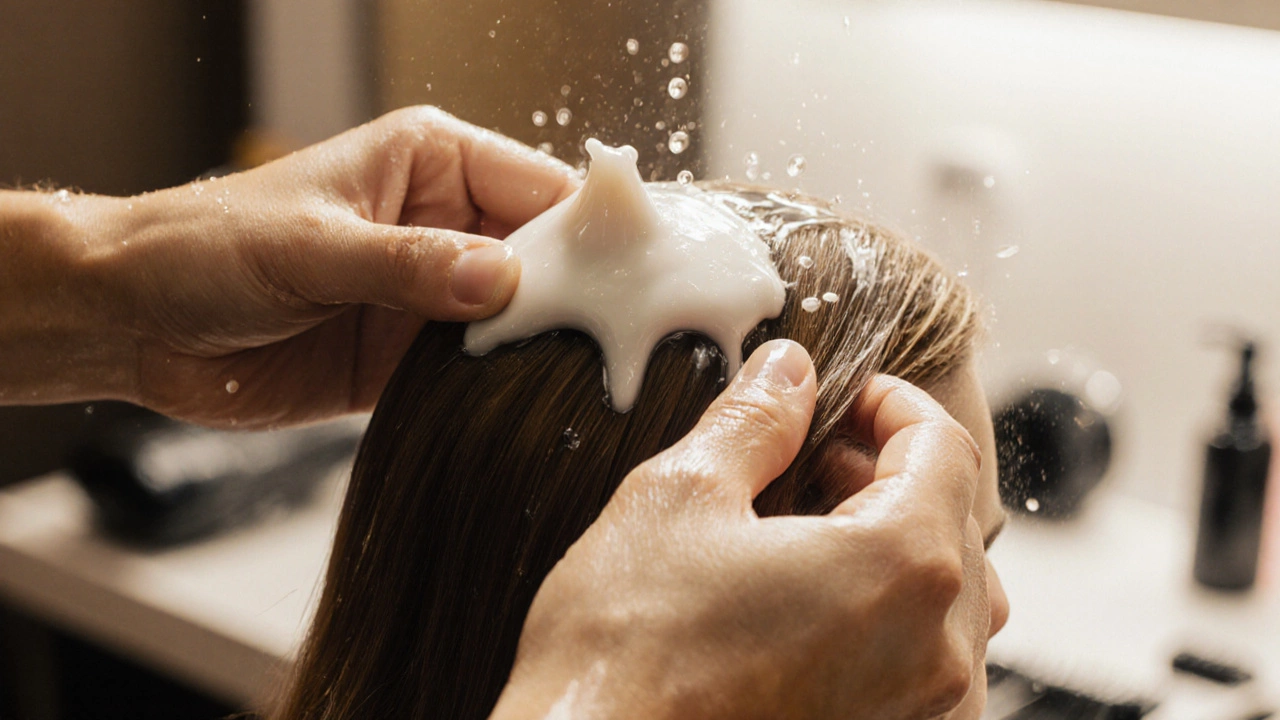Hair Serums: What They Do, Who They Work For, and What to Avoid
When you hear hair serums, lightweight, concentrated treatments applied to hair to smooth, protect, or add shine. Also known as hair oils or leave-in treatments, they're not meant to replace shampoo or conditioner—they're the final step in a routine that needs precision, not volume. Many people buy them because they’re marketed as fixes for frizz, breakage, or dullness. But not all serums do the same thing. Some lock in moisture, others seal the cuticle, and a few just coat hair with silicone to look shiny for a few hours. The real question isn’t whether you need one—it’s what kind of problem you’re trying to solve.
Think about your scalp health, the foundation of every strand of hair. If your scalp is dry or flaky, no serum will fix that—you need a cleanser and maybe a treatment, not a shine booster. If your hair is porous from coloring or heat, a serum with ceramides or plant oils can help seal in what’s left. And if you’re dealing with hair growth, the process of new hair emerging from the follicle. Also known as hair regeneration or follicle stimulation, it’s not something a topical serum can dramatically change unless it contains proven actives like caffeine or peptides. Most serums on the market won’t make your hair grow faster. But they can make it look healthier while it grows—which matters just as much.
There’s a big difference between a serum that helps and one that just sits there. If you’re using one and your hair still tangles, breaks, or looks greasy by noon, you’re probably using the wrong kind. Heavy silicones? They build up. Alcohol-based formulas? They dry you out. Fragranced serums? They irritate sensitive scalps. The best ones are simple: water, oils like argan or jojoba, and maybe a bit of panthenol. No mystery ingredients. No 17-step claims. Just one job: protect and smooth.
And here’s something most people don’t realize: serums work best on damp hair, not dry. Apply right after washing, when your strands are still wet but not dripping. That’s when they can actually bond to the hair shaft instead of just sitting on top. Use a pea-sized amount for short hair, a dime-sized one for shoulder-length, and don’t go overboard—too much looks oily, not glossy.
What you’ll find in the posts below isn’t a list of top 10 serums. It’s a real-world look at what works and what doesn’t. You’ll see how hair washing frequency affects how serums perform, why some people swear by water-only routines and still use serums, and how celebrity makeup trends have nothing to do with hair health—but do show how marketing tricks work. There’s also a deep dive into what makes a product truly cruelty-free, because if you care about ethics, you should care about what’s in that bottle too. And yes, we’ll talk about whether expensive serums are worth it—or if your $8 drugstore option does the same job.
What Do Hairdressers Put in Your Hair to Make It Silky? Top Products and Techniques Revealed
Hairdressers use professional conditioners, serums, and heat protectants to create silky hair. Learn which ingredients actually work-and how to replicate salon results at home.
